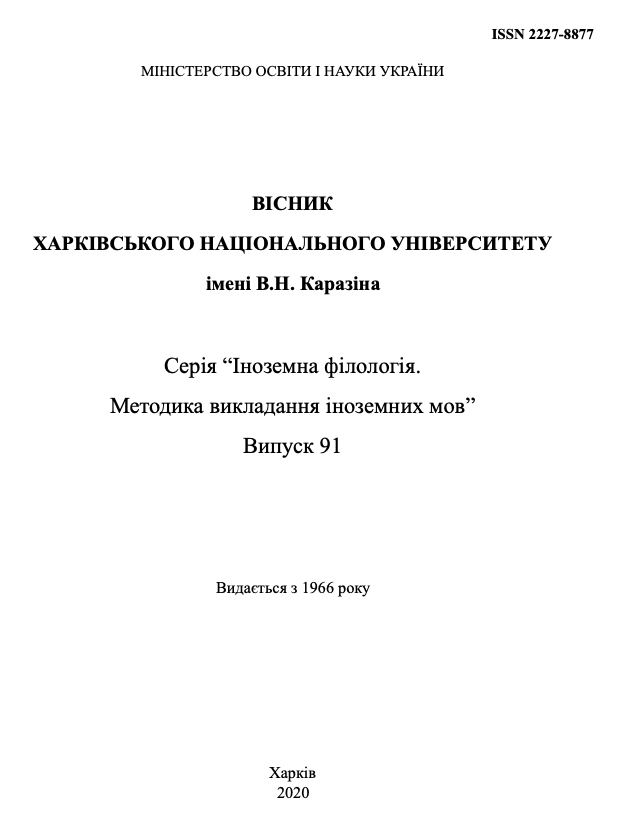The influence of parity judgement on the derivation process from the numerals ‘one’ and ‘two’
Abstract
The purpose of this research paper is to describe the relationship between the binary thinking of ancient people and the formation of the concept of number. The objects of the study are paleographic, ethno-psychological and biological studies examining the development of the counting principles and quantitative thinking of primitive men. The subject of the study are the numbers ’one’ and ‘two’, as well as their forms and derivatives in Germanic languages. The analyzed studies allow to conclude that the development of the first numerals derives from dual thinking, which is based on the ability to divide the whole into parts. The close connection to the surrounding world and the inborn parity judgement of some individuals in the Upper Paleolithic Period generates the first two numbers, hence numerals in the Proto Indo-European language. Both originate from one root, the form of which can be traced to the Proto Indo-European word ‘kwa’ as a part of the whole, i.e. two hands. Starting with the ultimate meaning of binary unified entity it split first into ‘part and whole’. Later the meaning branched even more (symmetry, completeness, contradiction, branching, merging, union, sameness, equality, repetitiveness, sequence, coherence, excessiveness, addition), creating diachronically countless derivatives of the initial ‘one’ and ‘two'. The binary nature of the Indo-European thinking had an effect on both everyday life and the religion, which was implemented in a later, pre-literate period and has been corroborated by archaeological finds. The rudimentary traces of primitive binary thinking are reflected in the contemporary realia and can be found in all languages of the Indoeuropean language group. The further research will cover the influence of the paired unity by fractionation on the allocation of subsequent numericals.
Downloads
References
Alekseev V.P. (1976) K proishozhdeniju binarnyh oppozicij v svjazi s vozniknoveniem otdel'nyh motivov pervobytnogo iskusstva [To the Origin of Binary Oppositions in Connection with the Emergence of Individual Motives of Primitive Art] // Pervobytnoe iskusstvo – Primitive art. 40–46 (in Russian)
Barkar U.I. (2014) Ponyattya chysel ‘odyn’ / ‘dva’ ta yikh realіzatsіya v nіmets'kii і Ukrayins'kіi movakh (semantyko-etimologіchne doslіdzhennya) [Notions of numbers ‘one’/’two’and their realization in German and Ukrainian languages (a semantic-etymological research)]: Diss. kand. filol. nauk Odessa. 256. (in Ukrainian)
Zinder L. (1968). Istoricheskaja morfologija nemeckogo jazyka [The historical morphology of the german language]. Saint Petersburg : Prosveshenie. 264. (in Russian)
Rybakov B. A. (1994) Jazychestvo drevnih slavjan [The ancient Slavic paganism]. Moskow : Nauka. 608. (in Russian)
Taranec V. G. (1999). Proishozhdenie ponjatija chisla i ego jazykovoj realizacii [Origin of the numeric notion and its lingual formation]. Odessa: Astroprint. 116. (in Ukrainian)
Frolov B.A. (1974). Chisla v grafike paleolita [Numbers in Paleolithic graphics]. Novosibirsk: National University Press. 239. (in Russian)
Chemodanov N. S. (1978). Hrestomatija po istorii nemeckogo jazyka [A German language history reader]. Moscow: Vysshaja shkola. 288. (in Russian)
Frank, M., Everett, D., Fedorenko, E., & Gibson, E. (2008). Number as a cognitive technology: Evidence from Pirahã language and cognition. Cognition, 108(3), 819-824.
Kerns, J., & Gonda, J. (1954). Reflections on the Numerals 'One' and 'Two' in the Ancient Indo- European Languages. Language, 30(2), 285.
Kristiansen, K., Olander, T., & Olsen, B. (2019). Tracing the Indo-Europeans. Oxbow Books. 183.
Lexer, M. (1979). Mittelhochdeutsches Handwörterbuch [Middle High German Dictionary]. Stuttgart: Hirzel. 800. (in German)
Plodowski, A., Swainson, R., Jackson, G., Rorden, C., & Jackson, S. (2003). Mental Representation of Number in Different Numerical Forms. Current Biology, 13(23), 2045-2050.
Schützeichel, R. (2004). Althochdeutscher und Altsächsischer Glossenwortschatz [Old High German and Old Saxon Tesaurus]. Tübingen: Max Niemeyer. 6630. (in German)
Szymanik, J. (2018). Quantifiers and cognition (1st ed.). Switzerland: Springer. 211.
Temple, E., & Posner, M. (1998). Brain mechanisms of quantity are similar in 5-year-old children and adults. Proceedings Of The National Academy Of Sciences, 95(13), 7836-7841.
Varella, S. (2019). Lexicon and word formation. Handbooks Of Linguistics And Communication Science (HSK), 45(1), 52-63.
Vries, J. (1970). Altgermanische Religionsgeschichte [Oldgermanic history of religion]. Berlin: W. de Gruyter. 625. (in German)




